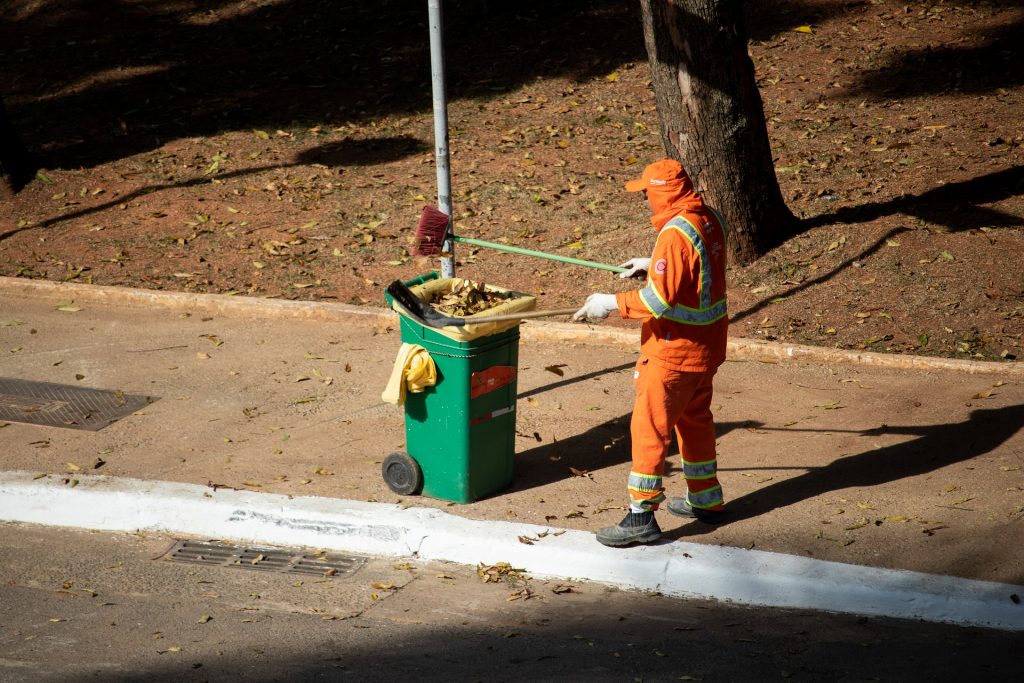Five Alternatives to Incarceration

The legal system gives inmates multiple alternatives to incarceration. Even though jails and prisons exist to punish criminals, they also allow them to reflect on their mistakes and learn from them. In turn, inmates become productive members of the community after their release. However, prisons and jails are physiologically and physically dangerous. That is to say, sending someone behind bars can, at times, do more harm than good. For example, a low-level shoplifter could end up becoming more violent after they go to prison. Similarly, some inmates might realize what their mistakes were and embark on a new and better path. Yet they must stay in prison until their sentence is concluded.
Luckily, there are ways for convicted criminals to serve their sentence outside of prison. The same applies to suspects who are waiting for the trial in jail. This article outlines the main options that felons and criminal offenders in different types of situations may have. In short, the main five alternatives to incarceration are:
- Probation
- House Arrest
- Community Service
- A Divided Sentence
- Bail and/or Restitution
1. Probation
Probation allows defendants to get out of jail or prison, but under certain rules and conditions. For example, former inmates must regularly check-in with a probation officer or supervisor. Similarly, alcohol and/or drug addicts will likely have to attend rehab sessions on an ongoing basis. While on probation, defendants’ activities and movements will also be restricted. For instance, they may not be allowed to obtain a driver’s license, purchase a gun, or leave the state. The rules and conditions largely vary from one case type to another.
The Rulebook
Whether a defendant is in jail awaiting trial or in prison serving their sentence, probation is certainly an option for them. They are even more likely to attain it if they are a first-time or low-level offender. To illustrate, here is an example: A defendant was arrested for driving while intoxicated. They haven’t injured anyone or damaged property, nor have they been accused of a DUI/DWI offense in the past. Because of this, the courts may spare the defendant from having to wait for their trial in jail. Instead, they are released on probationary rules.
When it comes to drug and alcohol-related crimes, violators will have to enroll in rehab classes and regularly attend them. They must also consistently report to their probationary officer or supervisor, alongside taking recurring and/or random drug/alcohol tests to ensure that they remain sober. Even if a former inmate’s crime is not related to substance abuse, they must still follow certain rules. For instance, the judge can impose a curfew and prohibit violators from leaving their home after a certain time of the day.
Above all else, defendants have to pay their fines while on probation, whether it’s in a lump-sum payment or in monthly installments. Failing to do so could land them back in jail or prison. The same would apply to other probationary rules (such as abiding by the curfew, not obtaining a license, and staying within their city or state). Keep in mind that inmates who violate these terms are less likely to be released on probation again in the future.
Probation and Early Release
Felons that are already in prison can still request probation. At times, this is the case even if they committed a serious or violent crime (including burglary and auto-theft, to name a couple of examples). Initially, a judge will probably not offer probation as an option. However, after felons serve a part of their sentence behind bars and demonstrate good behavior, the legal system may release them from prison early under probationary restrictions. When this is the case, the former inmate still has to follow certain rules and report to a supervisor. Yet as long as they do so, the felon will serve the remainder of their sentence on probation rather than in prison.

2. House Arrest
The first two alternatives to incarceration are somewhat similar. House arrest allows defendants to leave jail or prison, but they must serve their sentence within the confines of their home. To clarify, authorities will place an ankle bracelet on a felon in order to track their movement and ensure that they don’t leave the house. Moreover, defendants must pay their fines and follow certain rules. For example, the court may prohibit them from consuming alcohol or purchasing a firearm. When an inmate breaks any of these guidelines, the authorities will re-arrest the violator and send them back to jail or prison.
Just as with probation, house arrest is usually an option for first-time and nonviolent criminals. However, serious offenders could serve a portion of their sentence under house arrest when they demonstrate good behavior in prison. At times, courts might allow felons to leave their residence in order to go to school or work, obtain medical treatment, and check-in with a rehab supervisor or probationary officer.
3. Community Service
This alternative to incarceration entails dedicating a certain amount of hours to non-paid work. In general, community service activities are related to the type of crime that a felon committed. For instance, a worker at a school’s cafeteria stole food from the kitchen and money from the cashier. They might have to clean school buildings or help food banks handout items to the needy, to name a couple of examples. Community service can be a condition alongside other alternatives to incarceration. In other words, the courts commonly require felons that are released on probation to fulfill a certain amount of community service hours. If they don’t, the judge will revoke their probation and send the defendant back to jail or prison.
When a former inmate is sentenced to community service (as opposed to incarceration), they must commit a certain number of work hours. The felon could divide them up into weekly or monthly increments (such as working twenty hours per week). If a criminal doesn’t honor this obligation, the court may count it as a probation violation. Additionally, some judges will require current prisoners to fulfill community service obligations. Usually, this allows them to earn credits that would count towards an early release.

4. Dividing a Prison Sentence
Believe it or not, but some judges will allow felons to serve their prison sentence on certain days of the week. For example, if an inmate needs to work in order to care for their family, they could only go to jail during their days off. Similarly, a college student broke the law and stole items from a grocery store. After that, the court sentenced them to six months in prison (which is equal to one-hundred and eighty days). Meanwhile, the felon has to attend class four days a week (from Monday to Thursday). In light of this, they could only spend three days per week (Friday, Saturday, and Sunday) behind bars, up until they fulfill their full sentence of one-hundred and eighty days.
Keep in mind that this option requires inmates to voluntarily report to the prison on the required days. If they fail to show up as scheduled, authorities will revoke their privilege and send them to prison full-time (i.e. seven days per week). Usually, dividing your sentence comes alongside an at-large probation agreement. That is to say, felons still have to follow certain rules and restrictions when they’re not in prison. Examples of those include curfews and travel restrictions.
5. Paying for Freedom: Restitution vs. Bail
In essence, inmates can pay a certain amount to secure these alternatives to incarceration. Usually, these payments either come in the form of a bail bond (before trial) or restitution (after sentencing). Needless to say, this is not an option for everyone. The way that payments work depends on whether the inmate is in jail or prison.
Pretrial Bail
If a suspect is waiting in jail for their trial, they can simply secure their release by paying bail. The amount is largely tied to the nature of the offense that they committed. Smaller violations, such as a first-time DUI/OVI charge or shoplifting, come with a relatively affordable bail amount. This can range between one-thousand and five-thousand dollars. Serious accusations, including murder and assault, require a much heftier payment that can reach tens (if not hundreds) of thousands of dollars.
Defendants that post bail are certainly not off-the-hook. Firstly, they must abide by restrictive release rules. The requirements are similar to probations. Accused felons may need to attend rehab classes and they can’t travel out of state or own a firearm. Above all else, defendants must show up to trial. Otherwise, the judge will rule against them by default and, on top of the original charges, courts punish defendants for violating the terms of their bail release. Equally as important, posting bail doesn’t mean that the defendant will win the case. If the judge finds them guilty, the offender still has to serve their prison sentence behind bars after the trial.
Restitution
After a judge determines that a suspect committed a crime, they can avoid prison via restitution. In short, felons have the opportunity to correct their mistake. An example can illustrate how restitution works. A felon who stole a car and subsequently damaged it may pay the victim the cost of repairing the vehicle, alongside any related punitive or medical expenses. As a result, the courts will not send them to jail because the victim got their justice.
Similarly, a burglar could return stolen items (or their equivalent cash value) to the victim as a form of restitution. The courts may also allow felons to perform community service instead of paying money or repairing/giving back property. An animal abuser, for instance, could perform community service at a pet shelter or charity as alternatives to incarceration. After all, free work has an equivalent monetary value. This is because organizations would have to pay staff for each hour of mandatory community service that the felon contributed.
Making a payment isn’t always an alternative to incarceration. That is to say, serious and repeat offenders, including murderers, are rarely eligible for restitution. After all, certain types of wrongdoing and injustice cannot be corrected financially.

Potential Barriers: Affordability and Serious Offenses
It is important to note that the each of the five alternatives to incarceration might not be available to high-level offenders. Money is an equivalently difficult roadblock. Non-violent and first-time offenders could struggle to afford bail or the restitution amount. Having said that, there are certainly ways for felons to overcome both of those barriers and spend all (or part) of their sentence out of jail/prison.
Earning an Early Release
Currently housed inmates that are in different types of situations may secure an early release. This even applies to repeat-offenders and felons that committed serious crimes (such as auto-theft, robberies, fraud, and drug abuse). In order to get out of prison under probationary and house-arrest terms, felons must first fulfill certain requirements. For example, they must spend a minimum amount of time (usually two-thirds of their sentence) in prison before a judge can grant them release. Moreover, the inmate needs to earn a certain amount of credits (up to fifty-four “good behavior” days per year) that count towards the reduced sentence time. Seniors and chronically ill inmates might qualify for the Elderly Offender Pilot program and compassionate release, respectively.
Nevertheless, when courts allow inmates to get out of prison early, their alternatives to incarceration will likely be one or more of the five main ones. A felon with a serious medical condition might remain under house arrest, with permission go to the hospital for checkups and appointment. To ensure that they comply, authorities utilize an ankle bracelet. In another example, a repeat drug-offender can earn credits in prison, and after fulfilling two-thirds of their sentence, they secure an early release under probationary conditions. In other words, the felon still has to attend rehab classes, take random drug tests, and report to a supervisor or probation officer.
Click here for a detailed article on how currently housed inmates can secure an early release.
Affording Bail
Many criminal defendants wait for trial in jail because they can’t afford to pay the bail bond. Most of the time, their costs is in the tens of thousands, if not more. However, certain law firms specifically work with criminal suspects, especially nonviolent and low-level offenders that have a strong case. Some legal offices and charities also focus on helping defendants whose civil rights or due process protections were violated. In short, these organizations may post bail for jailed suspects or do so in the form of a loan. Unlike bail bond companies, law firms and charities don’t charge predatory interest rates or hidden expenses.
Equally as important, certain entities provide defendants with legal representation, which could include securing a non-financial pretrial release. As alternatives to incarceration, criminal suspects can stay under house arrest or probation while they wait for their trial. In all cases, a judge waives the bail amount when they are assured that the defendant will appear on the trial date. Probation and house arrest are two ways to do so. Government prosecutors, meanwhile, may drop some or all of the charges if a suspect follows certain probationary rules. As an instance, law enforcement could reduce the DUI punishment that they’re asking for after the defendant enrolls in rehab classes and abstains from alcohol.

Alternatives to Incarceration: Choosing the Right Option
Instead of serving time in prison or jail, a judge can punish a criminal via probation, house arrest, community service, a divided sentence, and/or restitution. This depends on the type and nature of the defendant’s case. At times, a judge could combine several alternatives to incarceration, such as probation and community service. Perhaps most noteworthy, these options may even be available to some repeat or serious felony offenders. In fact, even low-income inmates can find plenty of resources that help them overcome financial barriers, such as legal fees and bail/restitution payments.
At the end of the day, the whole purpose of the legal system is to correct criminal behavior and allow inmates to reflect on their mistakes. With that in mind, jails and prisons aren’t always the best way to attain this. Low-level offenders and prisoners that earned an early release may find alternatives to incarceration. These punishments suit their crime, enable them to heal, and ensure that justice is served.



